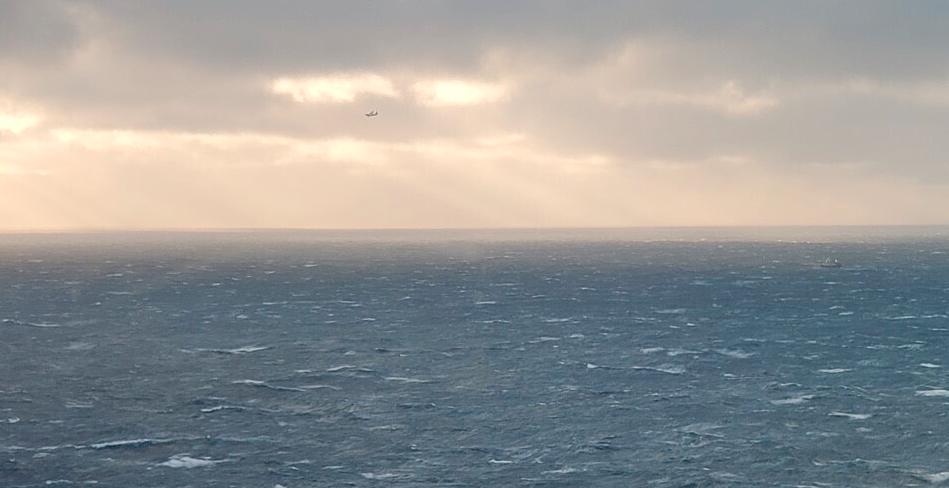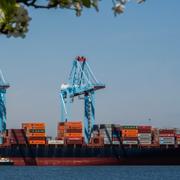bakgrund
Atlantic meridional overturning circulation
Wikipedia (en)
The Atlantic meridional overturning circulation (AMOC) is the main ocean current system in the Atlantic Ocean. It is a component of Earth's ocean circulation system and plays an important role in the climate system. The AMOC includes Atlantic currents at the surface and at great depths that are driven by changes in weather, temperature and salinity. Those currents comprise half of the global thermohaline circulation that includes the flow of major ocean currents, the other half being the Southern Ocean overturning circulation.
The AMOC is composed of a northward flow of warm, more saline water in the Atlantic's upper layers and a southward, return flow of cold, less salty, deep water. Warm water from the south is more saline ('halocline') because of the higher evaporation rate in the tropical zone. The warm saline water forms the upper layer of the ocean ('thermocline'), but when this layer cools down, the density of the salty water increases, making it sink into the deep. This is an important part of the motor of the AMOC system. The limbs are linked by regions of overturning in the Nordic Seas and the Southern Ocean. Overturning sites are associated with intense exchanges of heat, dissolved oxygen, carbon and other nutrients, and very important for the ocean's ecosystems and its function as a carbon sink. Changes in the strength of the AMOC can affect multiple elements of the climate system.
Climate change may weaken the AMOC through increases in ocean heat content and elevated flows of freshwater from melting ice sheets. Studies using oceanographic reconstructions suggest that as of 2015, the AMOC was weaker than before the Industrial Revolution. There is debate over the relative contributions of different factors and it is unclear how much of this weakening is due to climate change or the circulation's natural variability over millennia. Climate models predict the AMOC will further weaken during the 21st century. This weakening would reduce average air temperatures over Scandinavia, Great Britain, and Ireland, because these regions are warmed by the North Atlantic Current. Weakening of the AMOC would also accelerate sea level rise around North America and reduce primary production in the North Atlantic.
Severe weakening of the AMOC may lead to a collapse of the circulation, which would not be easily reversible and thus constitutes one of the tipping points in the climate system. A collapse would substantially lower the average temperature and amount of rain and snowfall in Europe. It may also raise the frequency of extreme weather events and have other severe effects.




